Key takeaways:
- Cart abandonment is influenced by unexpected costs, website usability, and trust issues, prompting businesses to address these factors to improve conversion rates.
- Effective web design and user-friendly checkout processes, including clear calls-to-action and multiple payment options, are essential for encouraging customers to complete purchases.
- Utilizing remarketing techniques, such as personalized emails and targeted ads, can effectively engage customers who have abandoned their carts, reminding them of their interests.
- Building customer trust through clear communication about policies and creating urgency can enhance the likelihood of completing sales.
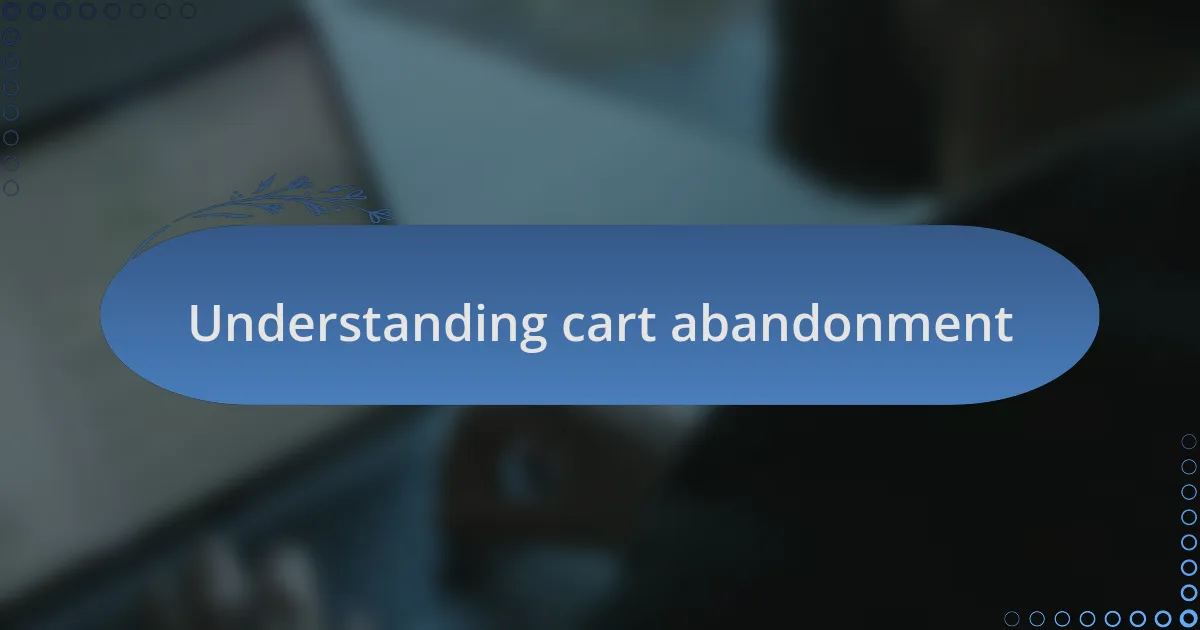
Understanding cart abandonment
Cart abandonment is a common hurdle in e-commerce, where potential customers add items to their carts but leave before completing the purchase. I often wonder why someone would invest time selecting products only to walk away at the last moment. It’s a frustrating experience, both for businesses and shoppers alike.
When I analyze my own shopping habits, I realize that distractions often lead to abandonment. Perhaps my phone buzzed with a notification, or maybe I hesitated over extra shipping costs. It hits me that every minor detail can tip the scales and send a customer right back out the virtual door, leaving them with unfulfilled desires.
Emotional factors also play a significant role. I’ve felt the sting of doubt creep in when I’m unsure if a site is secure or if the product meets my expectations—questions that linger as I navigate away. Understanding these motivations is key for businesses, as addressing emotional barriers can guide users back toward that elusive checkout button.
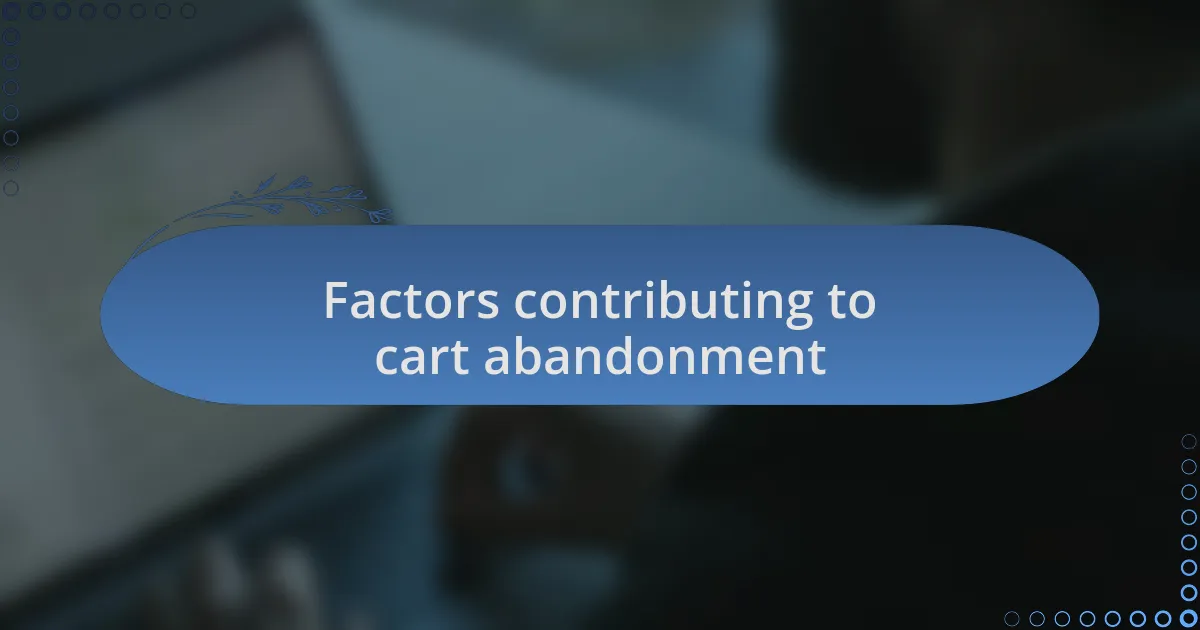
Factors contributing to cart abandonment
When I think about cart abandonment, one of the most striking factors is unexpected costs. I remember a time I was ready to finalize a purchase, only to be taken aback by high shipping fees that weren’t disclosed until the checkout page. It left me feeling misled and made me reconsider if the purchase was worth it. How often do shoppers leave because they feel blindsided by additional expenses?
Another aspect to consider is website usability. I can’t count how many times I’ve encountered complicated navigation or slow-loading pages while trying to make a purchase. In those moments, my patience wears thin, and I often opt to abandon my cart altogether. A seamless, user-friendly experience is essential; if a website feels clunky, customers will instinctively look elsewhere.
Moreover, I’ve found that trust issues significantly impact my decision to complete a purchase. When I land on a new site, I first look for familiar trust symbols, like security badges or customer reviews. If those aren’t present, I start questioning the legitimacy of the business, and that nagging uncertainty can be enough to push me back to safer shores. How many potential sales slip away simply because a website lacks credibility?
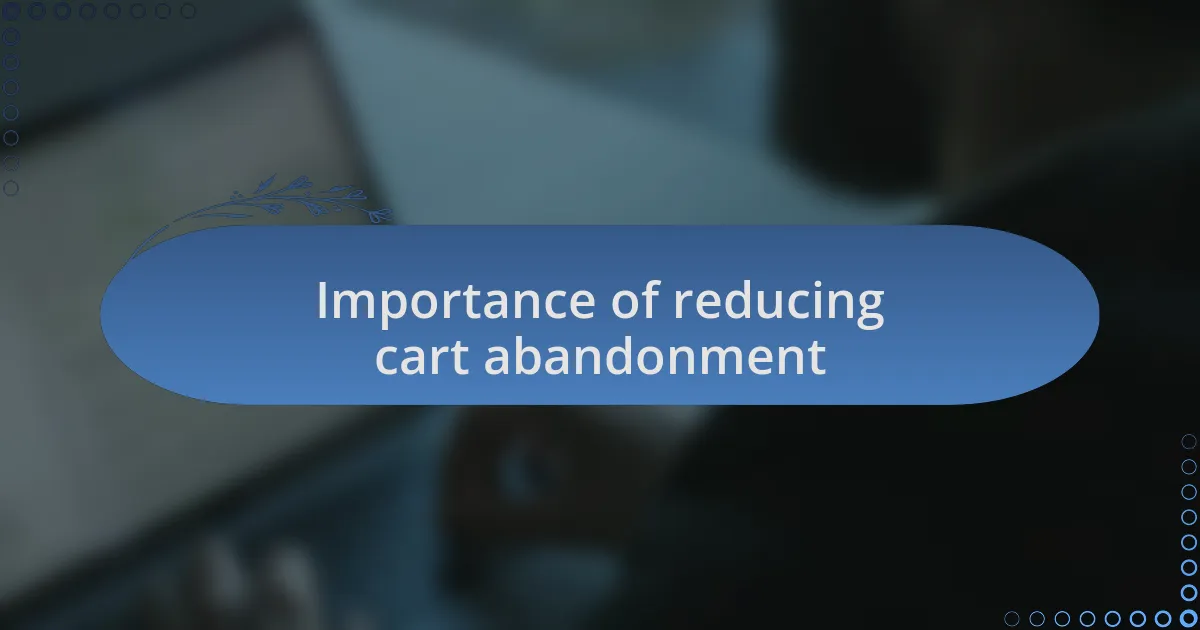
Importance of reducing cart abandonment
Reducing cart abandonment is crucial for boosting overall revenue and customer loyalty. I recall a situation where I hesitated to finalize an online purchase, thinking about the potential for future deals or discounts. If a business can minimize abandoned carts, it likely signals a more satisfied customer base that not only returns but also spreads the word about their positive experience.
The emotional aspect of cart abandonment can’t be overlooked either. I remember browsing and adding items to my cart, only to get side-tracked by a notification or distraction. That moment of distraction turned into a feeling of disappointment when I returned later to find my items still there, but my enthusiasm had faded. By effectively reducing cart abandonment, businesses can reignite that excitement and keep their customers engaged and motivated to finalize their transactions.
Additionally, think about what it means for your brand’s reputation. I once abandoned a cart on a site because the checkout process felt disconnected and impersonal. When a business invests in making that process smooth and engaging, it not only fosters positive feelings but ultimately builds trust. Isn’t it remarkable how a few small changes can reverberate through customer perceptions and drive loyalty?
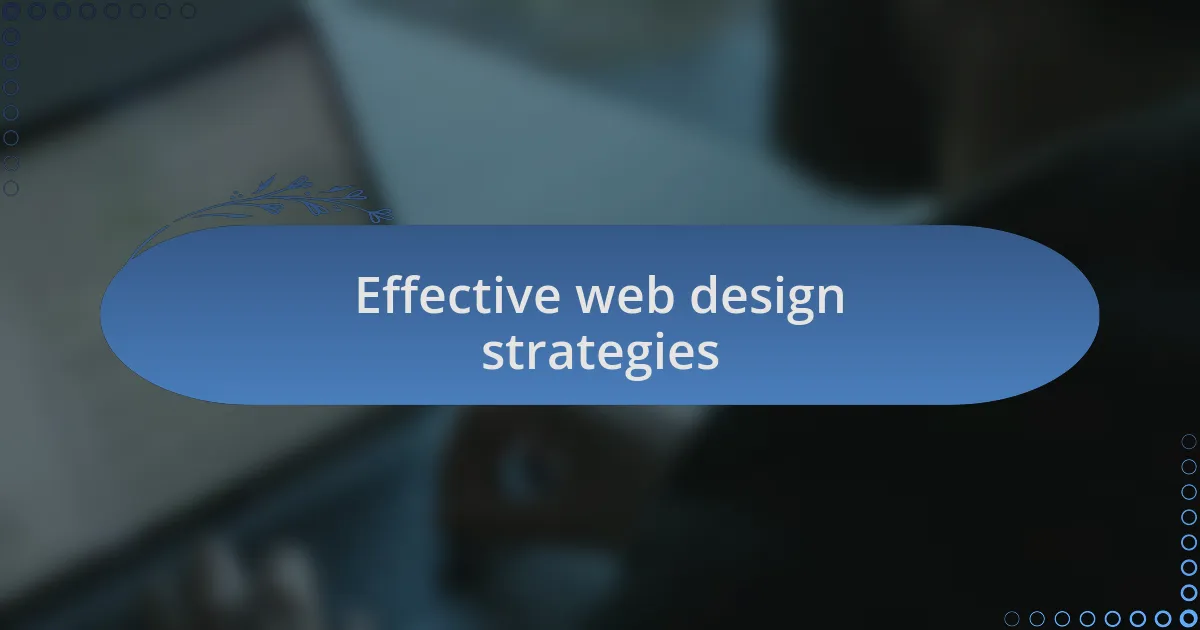
Effective web design strategies
Effective web design strategies focus on creating an intuitive and seamless user experience. I once found myself leaving a site simply because the navigation was clunky and confusing. By prioritizing user-friendly layouts, sites can guide shoppers effortlessly through their journey, making it more likely that they’ll follow through to checkout rather than abandon their carts.
The visual appeal of a website also plays a critical role. I remember being drawn to a product page that used high-quality images and engaging layouts. It made the items feel more tangible, almost enticing me to click “buy” before I even realized it. When designers invest in striking visuals, they can capture the essence of their products, helping customers visualize their purchases and driving conversions.
Lastly, including clear calls-to-action (CTAs) is essential. I learned this firsthand when a simple button prompting me to “complete your purchase” popped up as I was about to review my cart. That gentle nudge turned what could have been another abandoned cart into a completed transaction. Effective CTAs remind customers of the value of their choices and encourage them to act, creating a sense of urgency that’s hard to ignore.
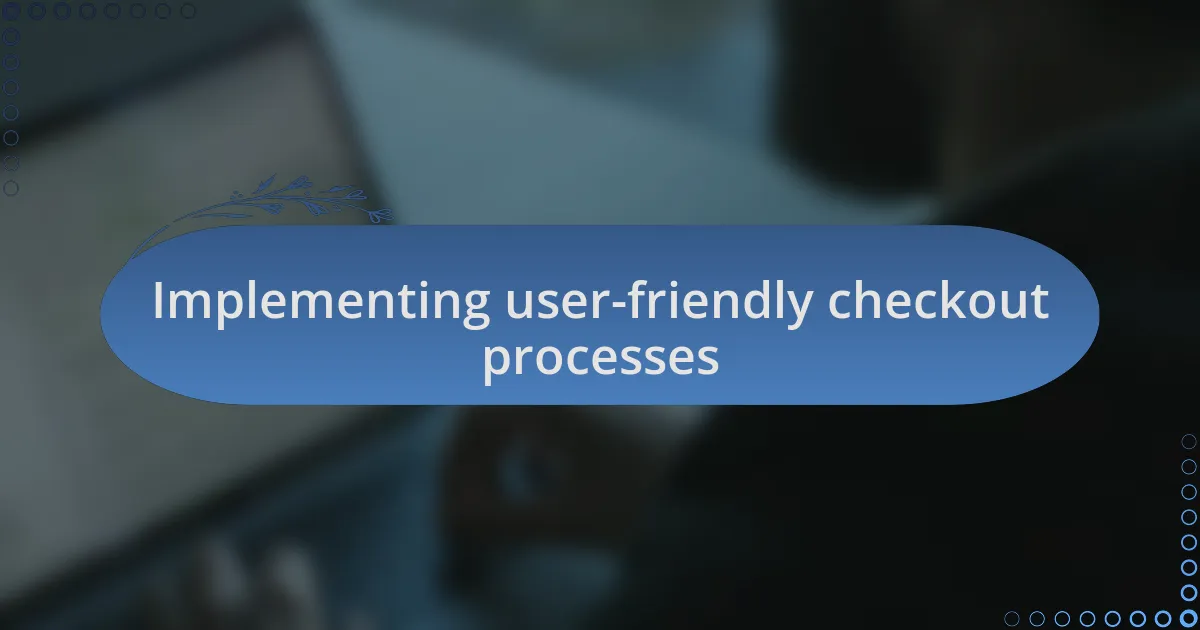
Implementing user-friendly checkout processes
A streamlined checkout process can dramatically enhance the user experience. I recall a time when I was ready to purchase a gadget, but the site required me to fill out an extensive form with unnecessary information. It made me question whether the hassle was worth it. By simplifying forms and only asking for essential details, websites can significantly reduce friction and keep customers moving forward.
Moreover, incorporating a progress indicator is a small yet impactful addition. When I see a visual cue showing me how far along I am in the checkout process, I feel reassured and more committed to completing the transaction. It’s like having a roadmap; it eliminates uncertainty and gives users a sense of accomplishment with each step completed.
Lastly, offering multiple payment options can make all the difference. I was once on the verge of abandoning my cart because my preferred payment method wasn’t available. When businesses diversify payment methods, it shows they understand the diverse needs and preferences of their customers, making the checkout experience feel accommodating and efficient. Isn’t it frustrating to lose a sale over something so easily addressed?
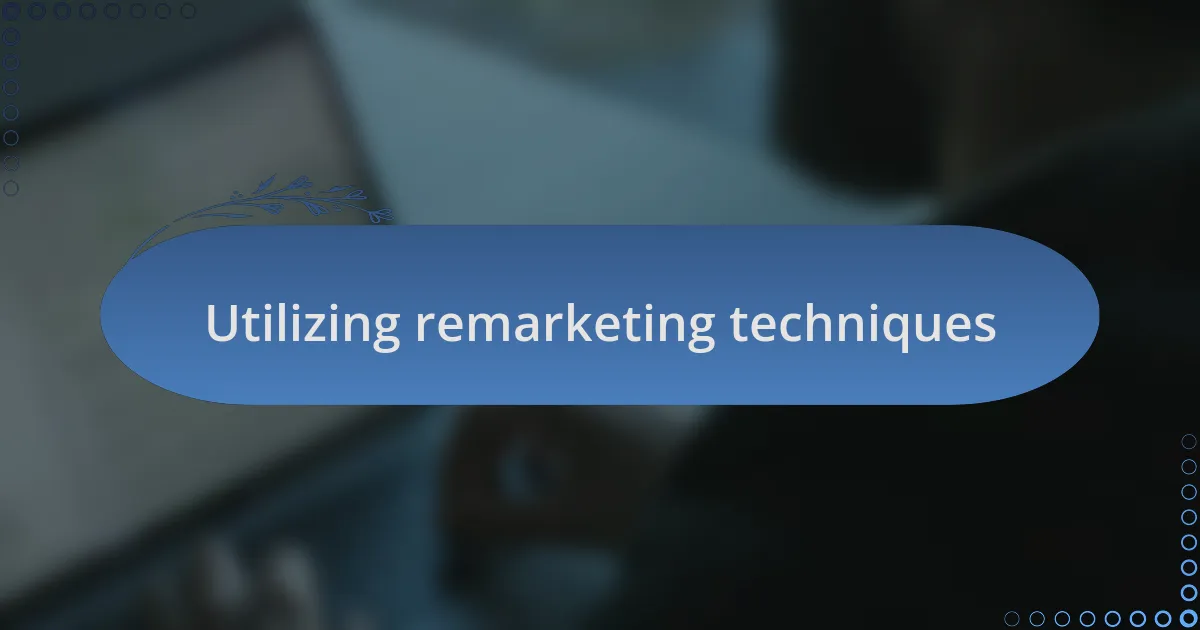
Utilizing remarketing techniques
Utilizing remarketing techniques is a powerful strategy to recapture potential customers who have abandoned their carts. I remember a time when I browsed an online clothing store, added a few items to my cart, but left the site without purchasing. A few days later, I received an email highlighting the items I’d looked at, along with a tempting discount. It was like the store was gently reminding me of what I wanted, and that little nudge made all the difference.
However, it’s not just about sending emails; I’ve noticed how retargeting ads can keep a brand fresh in a consumer’s mind. After I checked out a site for new headphones, similar products popped up on my social media feed. Initially, I was surprised, but then I felt appreciated – it was as though the brand truly understood my interests. It made me reconsider those headphones I had forgotten about and even pushed me toward making the purchase.
Additionally, implementing personalized remarketing strategies can create a sense of connection with customers. Reflecting on my experiences, when an ads popped up recommending accessories that complemented items in my abandoned cart, I felt understood. It’s not just about selling; it’s about creating a relevant dialogue that makes the customer feel valued. Wouldn’t it be great if every shopping experience felt tailored to our needs?
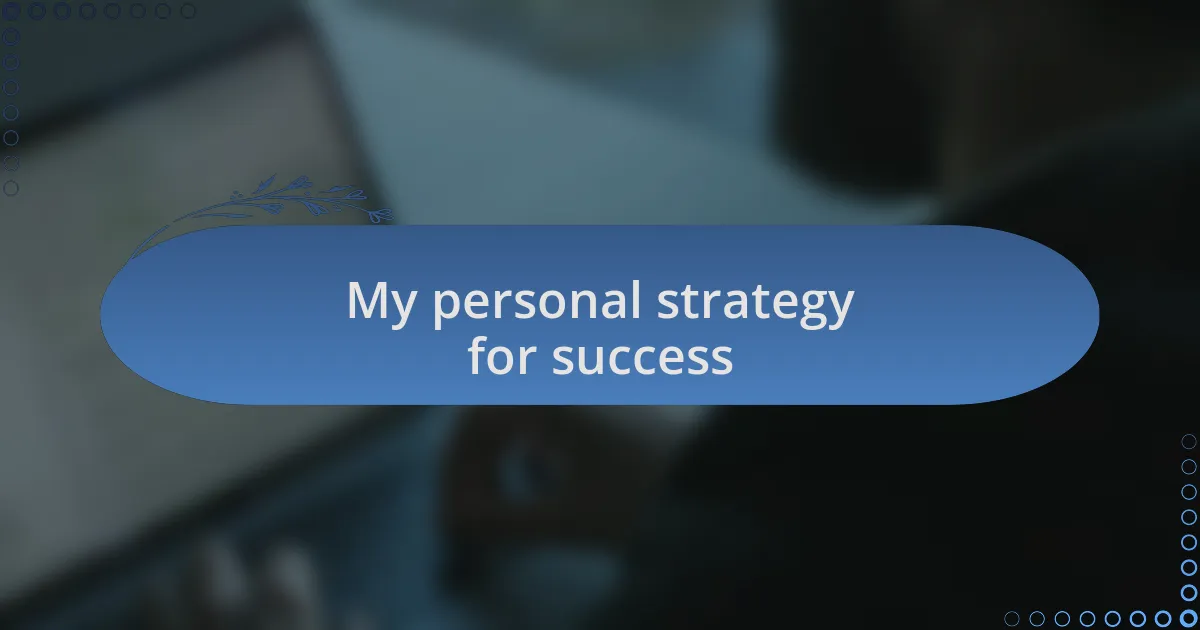
My personal strategy for success
When it comes to reducing cart abandonment, my personal strategy revolves around simplifying the checkout process. I recall a time when I faced a confusing array of options at a payment page, which made me reconsider my purchase. Streamlining that experience is crucial; I believe that a smooth and intuitive checkout can significantly impact whether a customer completes their transaction or walks away.
I also find that building trust through clear communication plays a vital role. For instance, I’ve often backed out of purchases because I was unsure about return policies or shipping times. In my experience, clearly displaying this information can ease potential concerns and reinforce the customer’s decision to buy. It’s all about providing that reassurance that makes them feel secure in their choice.
Moreover, creating a sense of urgency can be quite effective, too. I once encountered a situation where a site informed me that the item I wanted was running low on stock. That urgency drove me to act quickly, and I often wonder how many others feel the same nudge. Isn’t it fascinating how a little pressure can transform indecision into action?